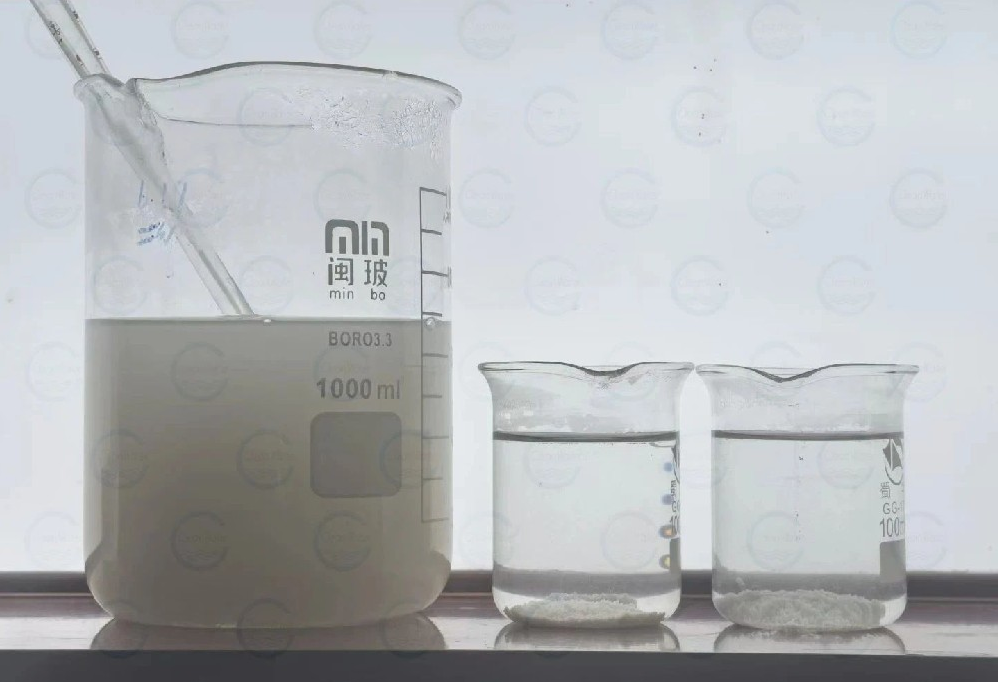The complexity of municipal wastewater components is particularly prominent. The grease carried by catering wastewater will form milky turbidity, the foam produced by detergents will appear blue-green, and the leachate of garbage is often dark brown. This multi-color mixed system puts higher requirements on wastewater decolorizers: it needs to have multiple functions such as demulsification, defoaming and oxidation-reduction at the same time. The test report of a sewage treatment plant in Nanjing shows that the chromaticity fluctuation range of its influent can reach 50-300 degrees, and the chromaticity of the effluent treated by traditional wastewater decolorizers is still difficult to stabilize below 30 degrees.
Modern wastewater decolorizers have achieved a performance leap through molecular structure design. Taking modified dicyandiamide-formaldehyde polymer as an example, the amine and hydroxyl groups on its molecular chain form a synergistic effect: the amine group captures anionic dyes through electrostatic action, and the hydroxyl group chelates with metal ions to eliminate metal coloring. Actual application data show that the chromaticity removal rate of municipal wastewater has increased to more than 92%, and the alum flake sedimentation rate has increased by about 25%. More noteworthy is that this wastewater decolorizer can still maintain high activity under low temperature conditions.
From the perspective of the entire water treatment system, the new wastewater decolorizer brings multiple improvements. In terms of treatment efficiency, after a reclaimed water plant adopted a composite wastewater decolorizer, the retention time of the fast mixing tank was shortened from 3 minutes to 90 seconds; in terms of operating cost, the cost of chemicals per ton of water was reduced by about 18%, and the sludge output was reduced by 15%; in terms of environmental friendliness, its residual monomer content was controlled below 0.1 mg/L, which is far below the industry standard. Especially when treating combined sewer network sewage, it has a good buffering capacity for sudden chromatic shocks caused by heavy rain scouring.
Current research focuses on three innovative paths: photocatalytic wastewater decolorizers can self-degrade after treatment to avoid secondary pollution; temperature-responsive wastewater decolorizers can automatically adjust molecular conformation according to water temperature; and bio-enhanced wastewater decolorizers integrate microbial degradation capabilities. These innovations continue to drive municipal wastewater treatment towards a more efficient and greener direction.
Post time: Jul-23-2025


